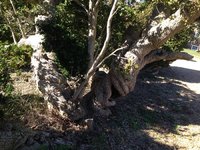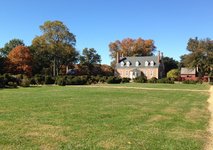I've been doing it for about 5 winters since we moved in and haven't had an issue. I don't have a place to heel-in my trees. I added a small fan to move the air and avoid the risk of fungus, which I've never had but have heard that can be a problem in spaces where the air is still. I put a thermometer in there that tracks the highest and lowest temp / humidity and it never went over 45, never went under freezing, which is perfect. I can actually do fall repotting, which, according to some sources such as Brent Walston's articles on Evergreen Gardenworks, is the best time to repot if you can provide these types of temperatures: the roots grow in and the plant is ready to go in the Spring. I haven't done it long enough or with enough trees to feel certain it is better than spring repotting, but it is nice to know I can do some work in fall so I don't have to do everything in spring. I also mostly do fall pruning on my deciduous trees because they are in development and removing the auxin in the fall allows all winter for the hormones to "sink" at new adventitious buds all over the plant, rather than just the ones closest to the cut point (which is more likely to occur with spring/summer pruning). I did a fall pruning on a lonicera nitida last year, and it grew all winter under the storm doors - I'll probably avoid fall pruning for evergreen broadleaf trees as they don't have as clear cut a dormant period (although maybe that was a fluke?).








